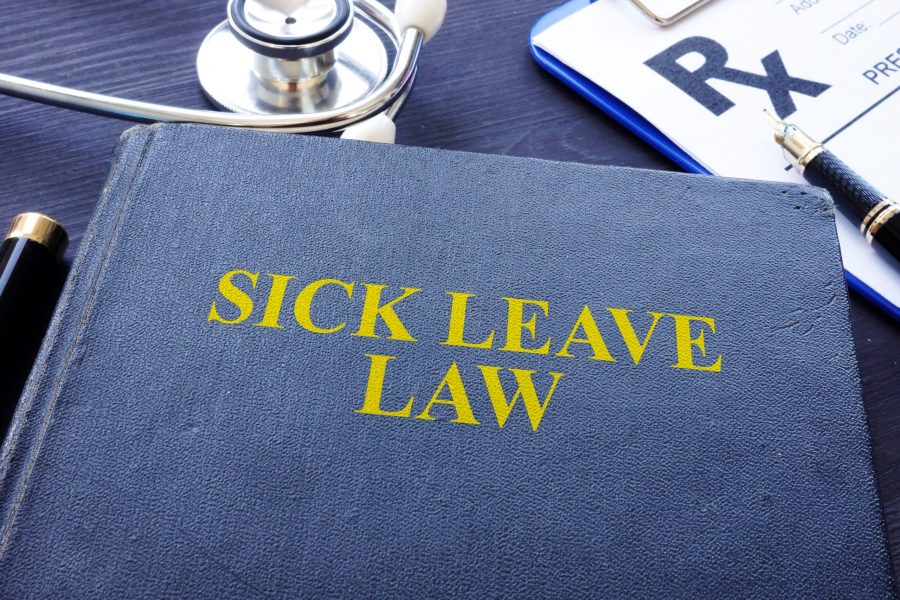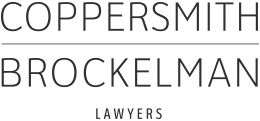Department of Labor Issues Initial Guidance and Mandatory Poster

A week after enactment of the Families First Coronavirus Response Act (FFCRA), the United States Department of Labor (DOL) has begun issuing guidance regarding the emergency paid leave provisions of the new law. (For our summary of the FFCRA, click here.)
Employers should take particular note that the DOL’s news release and related Questions and Answers set the effective date of the FFCRA as April 1, 2020. This is one day earlier than widely expected.
The guidance documents published by the DOL include a Fact Sheet for Employers, a similar Fact Sheet for Employees, and a very helpful Q&A document that clarifies answers to some common questions. Some of these guidance documents have already been updated by the DOL since their initial publication, so the landscape is changing quickly. We recommend that employers review the DOL’s guidance in full and check regularly for updates.
In the meantime, we summarize the key points here:
Counting to 499: For purposes of the fewer-than-500-employees threshold, the DOL confirms that the number of employees is to be counted at the time an employee takes leave. The employee count must include full-time and part-time employees, employees on leave, temporary employees who are jointly employed with another employer, and day laborers supplied by a staffing or temp agency. Only employees in the United States are counted.
Small Business Exemption: Regulations will be published regarding the criteria for this exemption, applicable to employers with fewer than 50 employees. At this time, there is no application or form, and it does not appear that there will be; instead, the DOL is advising employers to document why the business qualifies under the forthcoming criteria.
EPSL is Additional Leave: The DOL confirms that the FFCRA imposes new leave requirements on employers effective April 1, 2020. Accordingly, employers cannot deny federal emergency paid sick leave (EPSL) to an employee, even if the employer gave the employee paid leave before April 1 for a reason that qualifies for EPSL.
Arizona employers, take note: most of the reasons for which an employee may take paid sick time (PST) under Arizona law also qualify for use of EPSL if those reasons are COVID-19 related. Thus, if an employee has PST (or PTO that is useable as PST) available as of April 1, the employee must first be allowed to use the federal EPSL to cover a qualifying absence.
Pay Rate for Employee’s Own Illness or Quarantine: If an employee is taking EPSL because they are unable to work or telework due to (1) a federal, state, or local quarantine or isolation order related to COVID-19; (2) advice from a health care provider to self-quarantine due to concerns related to COVID-19; or (3) symptoms of COVID-19 for which the employee is seeking medical diagnosis, the employee must be paid the greater of their regular rate of pay, the federal FLSA minimum wage, or the applicable state or local minimum wage, up to a maximum of $511 per day or $5,110 total over the two-week EPSL period.
Pay Rate for Care for Others / School Closure: If the employee is using EPSL to care for an individual who is under a quarantine or isolation order related to COVID-19, to care for the employee’s child whose school or place of care is closed (or whose care provider is unavailable) for COVID-19 related reasons, or because the employee is experiencing any other substantially-similar condition that may arise, as specified by the Secretary of Health and Human Services (note: no such conditions have yet been specified), the employee must be paid 2/3 of the greater of the amounts above, subject to a maximum of $200 per day or $2,000 over the two-week EPSL period.
If the employer agrees, an employee who is being paid at the 2/3 rate may use any other form of available paid leave to supplement their pay up to the employee’s normal earnings.
Counting Hours for Part-Time Employees: A part-time employee is entitled to EPSL for the employee’s average number of work hours in a two-week period. Therefore, hours of leave should be calculated based on the number of hours the employee is normally scheduled to work during the leave period. This assumes that the part-time employee has a regular schedule. For those whose schedule varies widely, a daily average number of hours should be calculated using the six-month period prior to the date of the leave, and then extrapolated for a two-week period. These same calculations should be used to determine the number of additional hours of EFMLA leave the employee may receive, if qualified, during the 10 additional weeks available for such leave.
Accounting for Overtime Hours: When calculating how many hours of EPSL the employee is eligible to take, overtime hours must be included if the employee normally would have been scheduled for more than 40 hours in a week. However, the pay does not need to include a premium for overtime hours. Further, EPSL is subject to a maximum of 80 hours over a two-week period. The DOL provides the following example: An employee who is scheduled to work 50 hours per week may use 50 hours of EPSL in the first week and 30 hours of EPSL in the second week, for a total of 80 hours. All of the hours would be paid at the employee’s regular hourly rate, not an overtime rate.
Interaction of EFMLA and EPSL: An employee taking emergency FMLA (EFMLA) leave may use EPSL for the first 10 (work) days of that leave period, or may substitute any paid time off available under the employer’s policy. Otherwise, the first 10 days are unpaid. (It is not clear to us why an employee would opt for unpaid leave if the employee has paid leave available.) For the remaining 10 weeks of EFMLA, the employee must be paid at least 2/3 of their regular rate for the hours they would normally be scheduled to work. The regular rate must be at or above the federal minimum wage, or the applicable state or local minimum wage, subject to maximums of $200 per day and $10,000 total for the 10 weeks.
Paid EFMLA is Limited: Paid EFMLA leave is available only for leave to care for the employee’s child whose school or place of care is closed, or when the childcare provider is unavailable, due to COVID-19 related reasons. Paid leave is not available for other FMLA-qualifying reasons (such as childbirth), but employers should not lose sight of the fact that the “regular” FMLA remains in effect, and unpaid leave is available for the usual reasons.
Interaction of EFMLA and “Regular” FMLA: The EFMLA does not expand the overall amount of FMLA leave available. That’s still 12 weeks total. Thus, an employee who has already used some (or all) of their 12 weeks of FMLA leave for other reasons does not get another full 12 weeks to use for EFMLA purposes.
Intermittent EPSL and EFMLA: Employees who are teleworking but unable to telework their normal work schedule for one of the qualifying reasons may take EPSL or EFMLA intermittently with the employer’s approval. Intermittent leave may be taken in any agreed-upon increment. In contrast, employees who continue to work at their normal worksite may take leave intermittently only for reasons related to school and childcare closures; sick leave must be taken in full-day increments (because, as the DOL points out, the intent of the paid leave provisions is to provide sufficient time off to keep employees from spreading the virus). The DOL expressly encourages employers and employees to collaborate to achieve flexibility and meet mutual needs.
Closures, Furloughs, and Reduced Hours: The DOL makes clear that employees do not qualify to use EPSL or EFMLA due to an employer’s decision to close the business entirely, or to reduce or eliminate an employee’s work hours, even if those decisions were made for reasons related to COVID-19, and even if the decisions occur after April 1.
Documentation: Employees must provide, and employers must retain (especially if they intend to claim tax credits), documentation supporting that leave is being taken for one of the qualifying reasons. Examples include written advice from a healthcare provider to self-quarantine, or a notice of school closing posted on the school’s website.
Temporary Non-Enforcement: The DOL is observing a temporary period of non-enforcement of the new requirements for the first 30 days after enactment of the FFCRA, or through April 17, as long as “the employer has acted reasonably and in good faith to comply with the Act.” The DOL defines “good faith” to mean that “violations are remedied and the employee is made whole as soon as practicable by the employer, the violations were not willful, and the [DOL] receives a written commitment from the employer to comply with the Act in the future.”
FFCRA Poster is Out
The DOL has now published the notice that employers covered by the FFCRA (those with fewer than 500 employees) must post in the workplace. It is available for download here. As with all such notices, it must be posted in a “conspicuous place.” However, in recognition that many employees are teleworking and would not see a physical display in the workplace, the DOL confirms in a posting-related Q&A that the notice can be posted electronically, such as on an intranet site or by emailing it to all employees.
Other Employer Resources for COVID-19
In this fast-changing environment, we also want to call your attention to several other helpful resources, some of which are being updated as circumstances evolve:
- DOL Q&A on COVID-19 and the Fair Labor Standards Act
- DOL Q&A on COVID-19 and the Family and Medical Leave Act
- OSHA Guidance on Preparing Workplaces for COVID-19 (OSHA)
- EEOC Guidance on Pandemic Preparedness
- EEOC Guidance on the ADA and COVID-19
- CDC Interim Guidance for Businesses and Employers. This Guidance was recently updated to include information about when it may be safe for employees to return to work after becoming ill with COVID-19. Specifically, employees should not return until the criteria for discontinuation of home isolation have been met, and in consultation with health care providers and state and local public health departments. See full details here.
